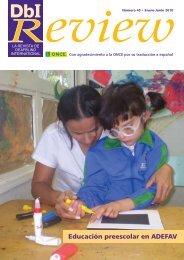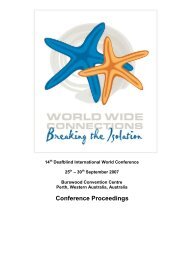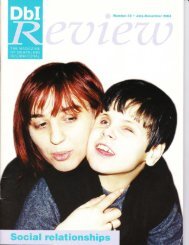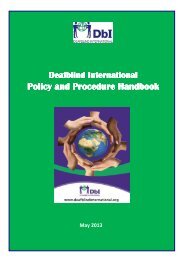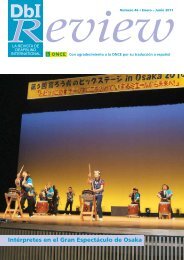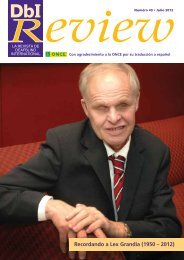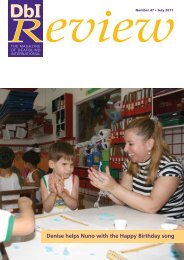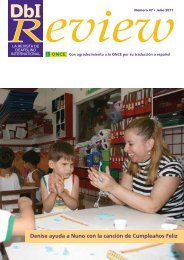DbI Review 35 - Deafblind International
DbI Review 35 - Deafblind International
DbI Review 35 - Deafblind International
- No tags were found...
Create successful ePaper yourself
Turn your PDF publications into a flip-book with our unique Google optimized e-Paper software.
E ast Afr icaA journey of a thousand milesstarts with a single step …Penny May Kamau reports on the barriers to education for deafblind childrenin East Africa, in spite of improvements in government policy. Societalperceptions of disability and lack of targeted funding for deafblind childrenis placing undue pressure on families who have difficult choices to makeabout the life chances of their children.Governments in Ke n y a ,Uganda and Ta n z a n i aare working hardtowards “Education for all”and great strides have beenmade in increased schoolenrollment in the last fewyears. In all three countrieseducation is now “free” andmany children who had neverseen the inside of a classroomare now enrolled, but what isthe situation for children witha disability and morespecifically those who ared e a f b l i n d ?The Ministries of Educationin the three countries haverecognised that deafblindchildren need their ownschool programmes and haveillustrated this by helping totrain and post teachers to thevarious deafblindprogrammes. In spite of thish o w e v e r, there are still manydeafblind children who, eventhough they have beenassessed and placementmade, are not in school. Whyis this?When parents firstunderstand that their child isdeafblind, acceptance cantake a long time. Someparents will never accept thatreality and there are manyexamples where it results inseparation or divorce whenone parent decides to leavethe family. In such cases theremaining parent is left tocope alone.In a society wherewitchcraft is still a potentforce, the community mayalso be hostile and“The Ministries of Education in the three countrieshave recognised that deafblind children need theirown school programmes and have illustrated this byhelping to train and post teachers to the variousdeafblind programmes ”accusations are flung at thefamily so that they believeand blame themselves as thecause of the child’s disability.In such cases it is unlikely thatthe child will ever move outof the home. The shame andfear can cause the child to behidden away from view butfortunately many parentschoose to accept the childand start to look forinformation and advice onhow to cope with thes i t u a t i o n .The first step is oftenmedical intervention, whichcan be traumatising and alsoc o s t l y. Parents are often toldthat the child will “never beable to do anything forh i m s e l f” or “don’t waste timeon this one”. Others pay outlarge sums of money forcorrective eye or heartsurgery and even much moreto buy adaptive devices.All this is a financial strainon the family. Many parentsgive up at this stage butothers, at least in Kenya andUganda where it is available,do persevere and find theirway to the educationassessment services wherethorough assessment of theeducational needs of the childare carried out. In Ta n z a n i aassessment of children with adisability is only available at2 2 • <strong>DbI</strong> <strong>Review</strong> • JA N U A R Y – JU N E 2 0 0 5





